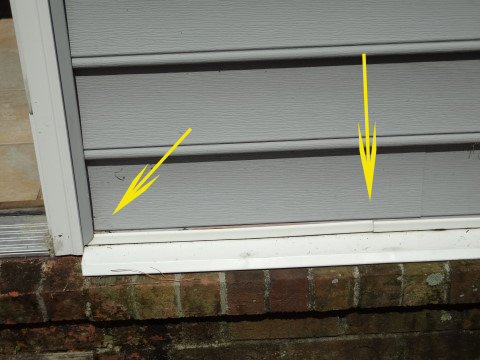Square corner j channel installation.
Sealing siding inside j channel.
One wonders if the top j channel runs were cut short and not bent over the outside of the vertical j channels.
Hook the bottom of each piece onto a lock molded into the top of the piece below.
Caulking can be placed behind the j channel during installation sealing the seam between the j channel and the house wrap also sealing the seam between the j channel and the window itself.
Overlap the flashing onto the row of siding just below the window.
Cut and install bottom j flush with the sides of the window casing.
How to prevent water from flowing under vinyl siding.
Now any water that runs inside the j channels will come out on top of the siding and out the weep holes designed for this purpose.
Cut a piece of flashing out of felt paper and install it at the bottom corners of the windows before you install the side j channels.
Paint works well over it.
Seal small cracks and gaps in your siding under 1 4 inch wide using an acrylic latex caulk.
Minimize j channel around openings at a front door a furring strip lifts the door trim enough to let siding panels tuck in behind.
Using 1 3 cup of water poured into gap at top of j channel the water flows into corner next to window and under the flashing and down th.
Cut a tab in the bottom of the side j channels and fold under.
Windows and doors need to be surrounded with a receiver channel to accept the ends of the siding.
Simply apply this inexpensive filler into the cracks to seal.
Although vinyl is impervious to water when installed as directed by the manufacturer vinyl siding as a whole is not completely watertight.
Install the rest of the siding as you normally would cutting around the windows and doors and fitting the last piece of siding into the j channels.
Siding pieces are usually 12 feet long and 10 to 12 inches high.

